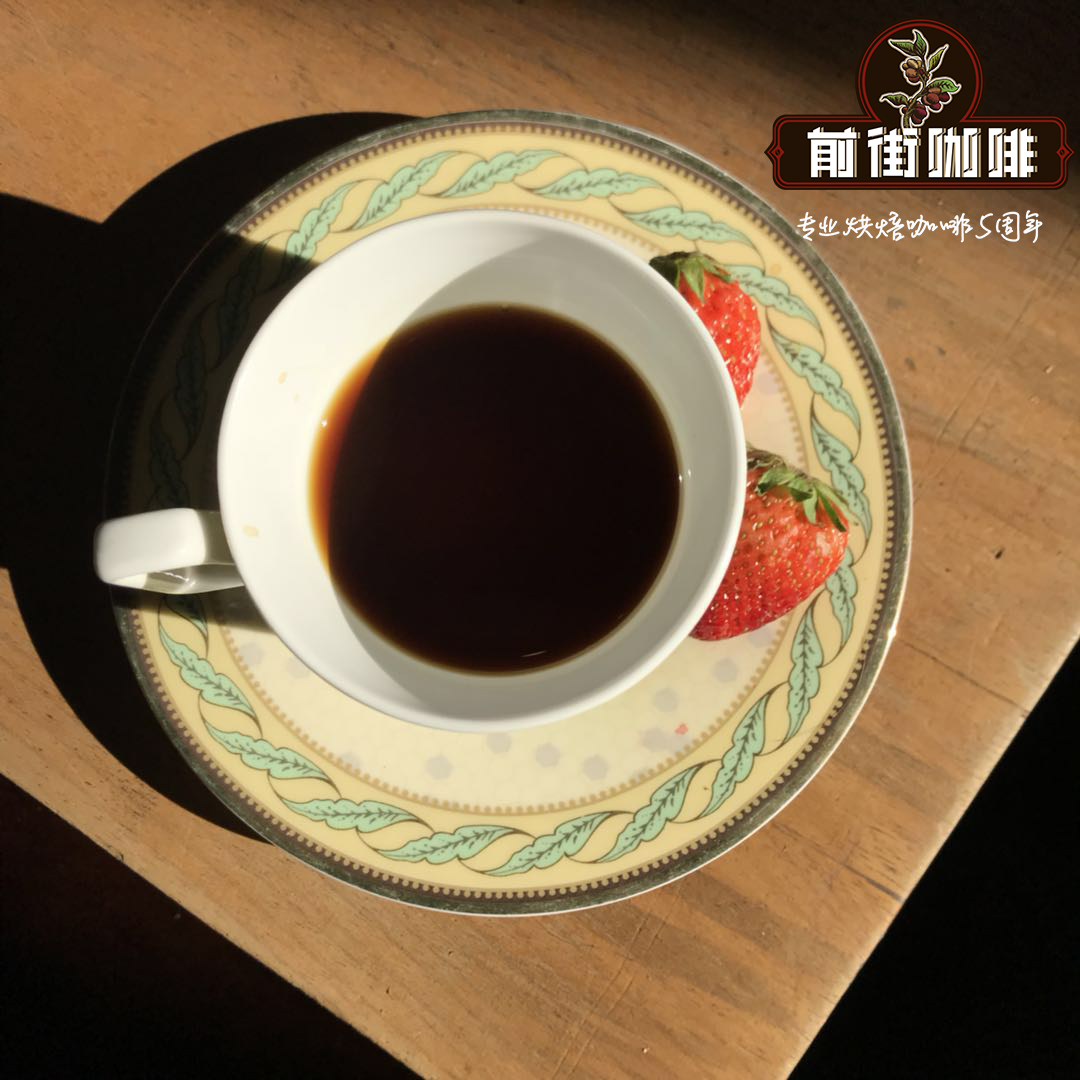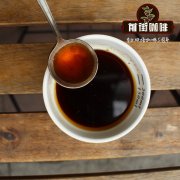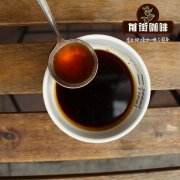What is French missionary Bourbon Kenya French missionary coffee? Characteristics of French missionaries

Professional coffee knowledge exchange more coffee bean information please follow the coffee workshop (Wechat official account cafe_style)
Coffee is native to Ethiopia. Around 1850, French missionaries brought coffee to Kenya via the colonial island of Bourbon (where it was planted) and took root there. Most of the varieties cultivated in Kenya are improved by SL. Native coffee is quite rare.
Kenya is one of the birthplaces of mankind, and fossilized human skulls from about 2.5 million years ago have even been unearthed in Kenya. From 1890 to 1963, it was under British colonial rule for about 70 years.
Kenya (Kenya) is located in eastern Africa, adjacent to Ethiopia, the "source of coffee". Despite the fertile soil, coffee was first grown in the country when Bourbon (also known as French mission, to commemorate the introduction of French missionaries) was introduced from Brazil in 1893; like the story of "go left, go right", coffee did not move inland to the south but to the Red Sea. After hundreds of years of spread, after settling down and mutating all over the world, he returned to his hometown, the Great Rift Valley (The Great Rift Valley).
As a British colony, it is only natural that the benefits of exporting coffee are skewed towards the sovereign state. Until 1954, Kenyans owned only 5000 acres of arable land, most of which were controlled by the British and sent to London for auction. Although the colony seems to have been exploited, without the British laboratory Scott Laboratories, Kenyan coffee would not have been what it is today. Because its representative varieties SL-28 and SL-34 are two of the 40 kinds of coffee grown in the laboratory that year. At present, the popular varieties in Kenya include Ruiri 11 with high disease resistance but slightly lower taste, and Batian, K7 and Kent with high drought resistance.
The Maomao uprising (Mau Mau Uprising), which took place in 1956-60, returned most of the control of cultivated land to indigenous people. Coffee farms are mostly small-scale operations with an annual output of hundreds of kilograms. They will decide to sell the fruit to the nearby processing plant (Coffee Factory) according to the delivery distance and the purchase price. The famous Karagoto Coffee, for example, is actually a processing plant around the town of Karatina. After collecting the coffee fruits of nearby farmers, they will be processed and exported. It will also provide farmers with technical support for planting. Karagoto itself, on the other hand, combines Tegu and Ngunguru processing plants to form a Tekangu Farmers Cooperative Society,FCS. Most of the famous producing areas in Kenya are concentrated in the central part, such as Nyeri, Kiambu, Kirinyaga and the western mountains near Uganda (Nakuru, Bungoma, Kitale, etc.).
At the beginning of the 20th century, French and British missionaries and researchers screened and cultivated coffee trees in Kenya, and successfully bred the direct descendants of the bourbon species "SL28" and "SL34". For a century, Kenyan coffee has adapted to Kenya's high concentration of phosphate soil, and has given birth to the special sour essence of Kenyan coffee beans, which is different from bourbon beans in other Central and South American countries.
Unlike most of the improved SL28 and SL34 cultivated in Kenya, the French missionary (French Mission) is a native bourbon coffee variety before scientific improvement. In the late 19th century, the French diplomatic corps was introduced to Kenya from the island of Bourbon (now known as Reunion), which retains the flavor of the traditional bourbon variety, which is similar in appearance and flavor to Rwanda bourbon, which is cultivated almost all over the neighborhood.
[Haniyeh] of the front street coffee is Bourbon, a French missionary from Kenya. The traditional sun treatment meets the traditional variety of coffee, which is a pleasant surprise.
The varieties of bourbon of French missionaries treated by sun are dense and rich. In addition to the thick chocolate finish, it also has an obvious sun fruit flavor, and the richness of the coffee is also good.
The Harris family has been growing coffee in the Thika region for more than 100 years and is well aware of the unique red volcanic soil here, coupled with the right coffee growth temperature and rainfall, these excellent growing environments give French missionaries a unique flavor.
Qianjie cooking parameters are suggested:
V60B 90 degrees water temperature / 1V 15 / time two minutes
Flavor:
Sweet with good citrus aromas. Steady with a touch of light, tropical fruit aromas like grapefruit. In the balance, there is a touch of wildness.
Important Notice :
前街咖啡 FrontStreet Coffee has moved to new addredd:
FrontStreet Coffee Address: 315,Donghua East Road,GuangZhou
Tel:020 38364473
- Prev

How do you drink French missionary coffee? What is French missionary coffee? French missionary Bourbon
Professional coffee knowledge exchange more coffee bean information please follow the coffee workshop (Wechat official account cafe_style) Kenya is one of the birthplaces of mankind, Kenya has even unearthed fossilized human skulls from about 2.5 million years ago. From 1890 to 1963, it was under British colonial rule for about 70 years. Kenya (Kenya) is in Africa
- Next

What are the characteristics of Kenyan French missionary coffee? French missionary coffee flavor and taste
Professional coffee knowledge exchange more information about coffee beans Please follow the coffee workshop (Wechat official account cafe_style) Coffee originated in Ethiopia. Around 1850, French missionaries brought coffee to Kenya via the colonial island of Bourbon (where it was planted) and took root there. Most of the varieties cultivated in Kenya are improved by SL. Native coffee
Related
- Detailed explanation of Jadeite planting Land in Panamanian Jadeite Manor introduction to the grading system of Jadeite competitive bidding, Red bid, Green bid and Rose Summer
- Story of Coffee planting in Brenka region of Costa Rica Stonehenge Manor anaerobic heavy honey treatment of flavor mouth
- What's on the barrel of Blue Mountain Coffee beans?
- Can American coffee also pull flowers? How to use hot American style to pull out a good-looking pattern?
- Can you make a cold extract with coffee beans? What is the right proportion for cold-extracted coffee formula?
- Indonesian PWN Gold Mandrine Coffee Origin Features Flavor How to Chong? Mandolin coffee is American.
- A brief introduction to the flavor characteristics of Brazilian yellow bourbon coffee beans
- What is the effect of different water quality on the flavor of cold-extracted coffee? What kind of water is best for brewing coffee?
- Why do you think of Rose Summer whenever you mention Panamanian coffee?
- Introduction to the characteristics of authentic blue mountain coffee bean producing areas? What is the CIB Coffee Authority in Jamaica?

